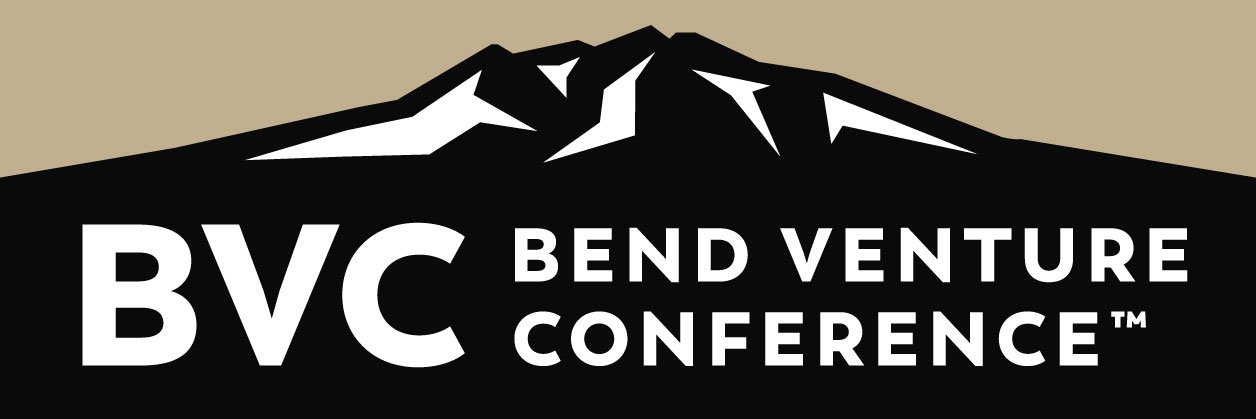Eight companies awarded a total of $595,000 in investments at BVC
The 20th Annual Bend Venture Conference took place on October 19-20, 2023 at venues across Bend. During the conference, 14 finalists presented their ideas and business models to an audience of hundreds in hopes of gaining investment from prominent funds. Of those finalists, eight companies were awarded a total of $595,000 in investments.
2023 BVC Growth Stage & Impact Finalists
The following companies will present in the Growth Stage and Impact Track during the 20th Annual Bend Venture Conference. In addition to company pitches, attendees will hear from leading experts in venture capital and entrepreneurship, such as Joth Ricci, CEO of Dutch Bros. Coffee, who led the company through its initial public offering (IPO), and serial entrepreneur and investor Allie Magyar, who received over $2 million in investment during the 2016 Bend Venture Conference for her event technology company, Hubb.
Hundreds Voted! EDCO Announces the Early Stage Finalists
Almost 300 people crowded Worthy’s outdoor patio for Central Oregon PubTalk: The Road to BVC, where 10 Early Stage companies pitched their business ideas. The audience, along with an expert panel of judges, voted to decide which companies would advance to present at BVC. In addition, the audience favorite, Revino, walked away with a $3,000 check.
2023 Growth Stage & Impact Track Semifinalists
Each year, new BVC Growth and Impact Funds are raised to invest in the most promising companies that compete in the annual conference. The semifinalists in the Growth Stage and Impact Track will meet with investors to determine which companies will advance to the BVC stage.
High Desert Innovation Week
Inaugural Innovation Week showcases entrepreneurs and startup support organizations throughout Oregon. Collaborators include Bend Outdoor Worx, Bend Startup Central, Built Oregon, Cultivate Bend, Economic Development for Central Oregon (EDCO), and VertueLab .
2023 Early Stage Semifinalists
Announcing the 2023 Early Stage semifinalist companies advancing to the stage for Central Oregon PubTalk on September 28th at Worthy Brewing, where the audience and a panel of expert judges will decide which companies will make it to the final stage at BVC in October.
The Bend Venture Conference Returns October 19-20, 2023
The 2023 BVC will feature impressive speakers from across the country representing angel investors, venture capitalists and entrepreneurs. Friday’s agenda will feature a Keynote presentation by Joth Ricci, Chief Executive Officer and President of Dutch Bros Coffee.
Bend Venture Conference Finalists Continue to Find Success
Last October, 14 finalists presented their ideas and business models to an audience of hundreds at the Tower Theatre in hopes of gaining investment from prominent funds. Of those finalists, seven companies walked away that day with checks totaling $665,000 in investments.
19th Annual Bend Venture Conference: Seven Companies Awarded a Total of $665,000
BEND, Ore. – October 23, 2022 – Economic Development for Central Oregon (EDCO) hosted the 19th Annual Bend Venture Conference (BVC) at the Tower Theatre in Downtown Bend. During the conference, 14 finalists presented their ideas and business models to an audience of hundreds in hopes of gaining investment from prominent funds.
Growth Stage and Impact Finalists Presenting at the 2022 Bend Venture Conference
BEND, Ore. – October 7, 2022 – Economic Development for Central Oregon (EDCO) announces the finalists advancing in the Growth Stage and Impact tracks for the 19th Annual Bend Venture Conference (BVC) on Thursday, October 20 – Friday, October 21, 2022. BVC is one of the largest angel investment conferences in the West; bringing together…
Announcing the 2022 Early Stage Finalists
BEND, Ore. – September 23, 2022 – Economic Development for Central Oregon (EDCO) announces the five finalists advancing in the Early Stage competition for the 19th Annual Bend Venture Conference (BVC) on Thursday, October 20 – Friday, October 21, 2022. These companies will compete for a minimum investment of $30,000 from Portland Seed Fund.
2022 Growth and Impact Stage Semifinalists Announced
September 15, 2022 – Economic Development for Central Oregon (EDCO) announced the semifinalist companies advancing in the Growth and Impact Stage competitions for the 19th Annual Bend Venture Conference (BVC) on Thursday, October 20 – Friday, October 21, 2022. The nine semifinalists in the Early Stage competition category were announced earlier this week.

EDCO EVENT HIGHLIGHTS












